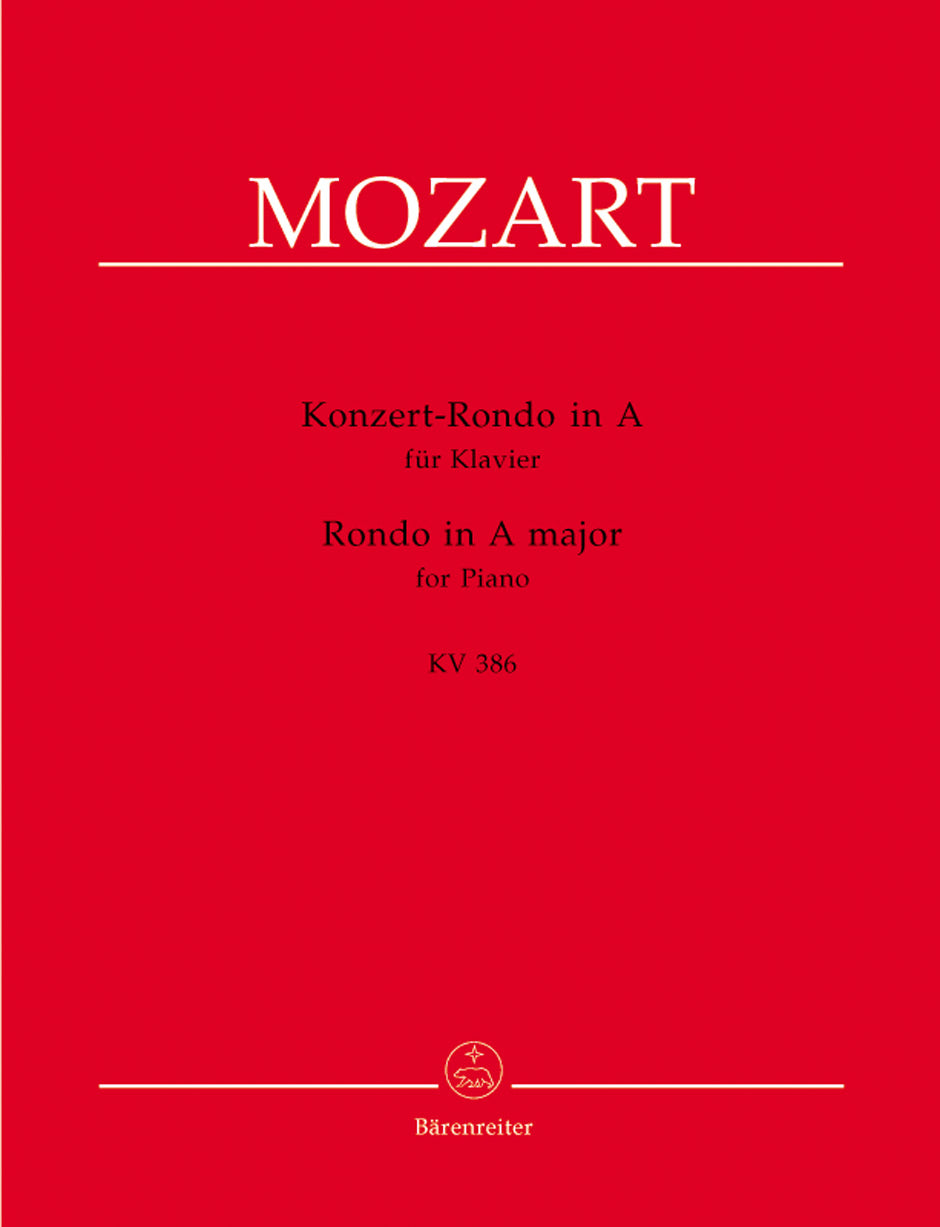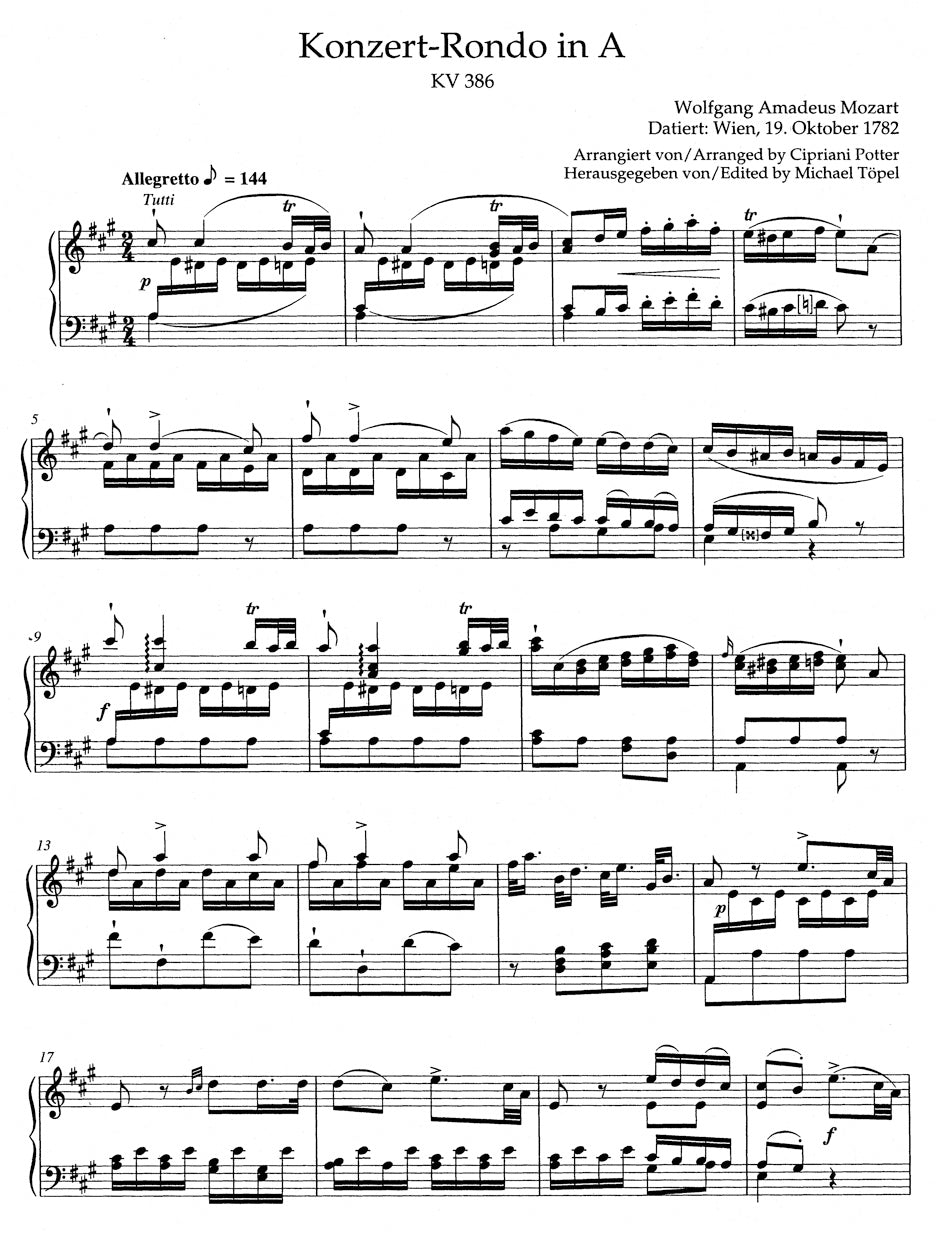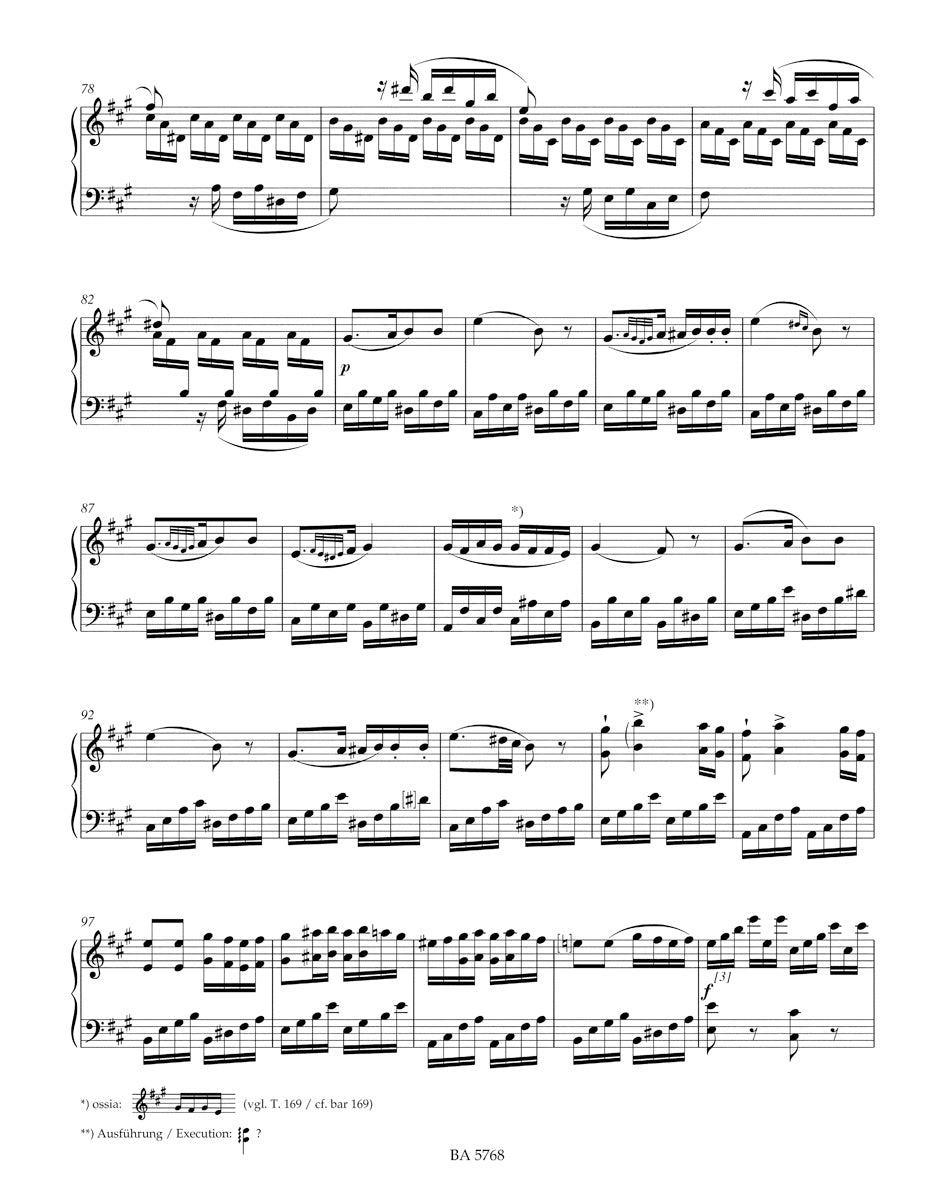Mozart: Concert Rondo in A Major, K. 386 (arr. for solo piano)
In stock and typically ships within 1 business day.
- Composer: Wolfgang Amadeus Mozart (1756-1791)
- Editor: Michael Töpel (1958-)
- Arranger: Potter Cipriani
- Instrumentation (this edition): Piano
- Originally for: Piano, Orchestra
- Work: Concert Rondo in A Major, K. 386
- ISMN:
- Size: 9.6 x 12.2 inches
- Pages: 19
Description
The manuscript of Mozart's Rondo for piano and orchestra has an incredible history. The almost complete autograph score was sold page by page at auction in London during the 1830s. Some of the pages auctioned off were even ripped in half. Not surprisingly, the original was scattered to all corners of the globe and is now incomplete. Today large sections of Mozarts handwritten score have resurfaced, but large gaps still remain.
The only source that contains the entire work is an arrangement for solo piano by the composer Cipriani Potter (1792-1871). He produced his arrangement before the auction took place and published it in 1838 with the added remark: "Arranged from the original score in the author's own hand writing."
A comparison with the end of the Rondo, which resurfaced only a few years ago, reveals the extent of Potter's interventions. Bärenreiter's performing edition of Potter's original print reproduces this ending as an optional alternative while also drawing on the fragments of Mozarts autograph. This edition also contains a cadenza suggested by the editor since no cadenza by Mozart has survived for this work.
Potter's arrangement preserves the extraordinarily beautiful sound quality of Mozarts original for performances without orchestra.
Publishers use a lot of words to describe what they sell, and we know it can be confusing. We've tried to be as clear as possible to make sure you get exactly what you are looking for. Below are descriptions of the terms that we use to describe the various formats that music often comes in.
Choral Score
A score for vocalists that only contains the vocal lines. The instrumental parts are not there for reference. Generally, cheaper than a vocal score and requires multiple copies for purchase.
Facsimile
Reproductions of the original hand-written scores from the composer.
Full Score
For ensemble music, this indicates that the edition contains all parts on a single system (there are not separate parts for each player). In larger ensembles, this is for the conductor.
Hardcover
Hardbound. Generally either linen-covered or half-leather.
Orchestral Parts
Similar to a wind set, this is a collection of parts. In the case of strings, the numbers listed are the number of copies included, though generally these are available individually (often with minimum quantities required).
Paperback
When publishers offer multiple bindings (e.g. hardcover) or study scores, this is the "standard" version. If you're planning to play the music, this is probably what you want.
Performance / Playing Score
A score of the music containing all parts on one system, intended for players to share. There are not separate parts for each player.
Set of Parts
For ensemble music, this indicates that there are separate individual parts for each player.
Solo Part with Piano Reduction
For solo pieces with orchestra, this is a version that contains a piano reduction of the orchestra parts. For piano pieces, two copies are typically needed for performance.
Study Score
A small (think choral size) copy of the complete score meant for studying, and not playing. They make great add-ons when learning concertos and small chamber works.
Vocal Score
A score prepared for vocalists that includes the piano/organ part or a reduction of the instrumental parts.
Wind Set
For orchestral music, this is a collection of wind and percussion parts. The specific quantities of each instrument are notated.
With Audio
In addition to the printed music, the edition contains recordings of the pieces. This may be an included CD, or access to files on the internet.
With / Without Fingering (Markings)
Some publishers prepare two copies - a pure Urtext edition that includes no fingering (or bowing) suggestions and a lightly edited version that includes a minimal number of editorial markings.





